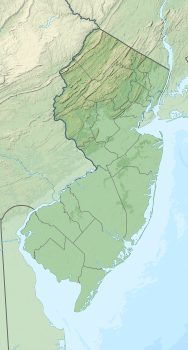|
Port Reading, New Jersey
Port Reading is an unincorporated community and census-designated place (CDP)[9] in Woodbridge Township, Middlesex County, New Jersey, United States.[10][11][12] As of the 2020 census, the population was 3,921.[3] HistoryPort Reading was built in the late 19th century by the Reading Railroad of Pennsylvania to serve their shipping needs, especially coal from the Pennsylvania anthracite coal fields. In 1892 Port Reading was connected to the Reading Railroad system via a new branch line from Port Reading Junction near Bound Brook, New Jersey, known as the Port Reading Secondary. The Port Reading Refinery was located in the district. GeographyPort Reading is in northeastern Middlesex County, in the northeast part of Woodbridge Township. It is bordered to the north and east by the borough of Carteret, to the northwest by Avenel within Woodbridge Township, to west by Woodbridge proper, and to the south by Sewaren, also within Woodbridge Township. It is bordered to the southeast by the tidal Arthur Kill, across which is Staten Island, New York. The New Jersey Turnpike passes through Port Reading, with the closest access being Exit 12 in Carteret. According to the U.S. Census Bureau, Port Reading has an area of 2.20 square miles (5.70 km2), including 1.98 square miles (5.13 km2) of land and 0.23 square miles (0.60 km2) of water (10.26%) lying within the Arthur Kill.[1] Demographics
2010 censusThe 2010 United States census counted 3,728 people, 1,283 households, and 998 families in the CDP. The population density was 1,662.2 people per square mile (641.8 people/km2). There were 1,342 housing units at an average density of 598.3 units per square mile (231.0 units/km2). The racial makeup was 79.75% (2,973) White, 7.19% (268) Black or African American, 0.24% (9) Native American, 4.99% (186) Asian, 0.00% (0) Pacific Islander, 5.53% (206) from other races, and 2.31% (86) from two or more races. Hispanic or Latino of any race were 17.84% (665) of the population.[14] Of the 1,283 households, 33.2% had children under the age of 18; 57.2% were married couples living together; 15.0% had a female householder with no husband present and 22.2% were non-families. Of all households, 18.7% were made up of individuals and 10.2% had someone living alone who was 65 years of age or older. The average household size was 2.91 and the average family size was 3.31.[14] 22.5% of the population were under the age of 18, 8.5% from 18 to 24, 25.2% from 25 to 44, 27.2% from 45 to 64, and 16.6% who were 65 years of age or older. The median age was 41.2 years. For every 100 females, the population had 96.2 males. For every 100 females ages 18 and older there were 91.1 males.[14] 2000 censusAs of the 2000 United States census[6] there were 3,829 people, 1,337 households, and 1,069 families living in the CDP. The population density was 663.2 people/km2 (1,718 people/sq mi). There were 1,357 housing units at an average density of 235.0 units/km2 (609 units/sq mi). The racial makeup of the CDP was 90.99% White, 2.61% African American, 2.40% Asian, 1.78% from other races, and 2.22% from two or more races. Hispanic or Latino of any race were 7.57% of the population.[13] There were 1,337 households, out of which 33.3% had children under the age of 18 living with them, 61.2% were married couples living together, 13.2% had a female householder with no husband present, and 20.0% were non-families. 16.2% of all households were made up of individuals, and 7.3% had someone living alone who was 65 years of age or older. The average household size was 2.86 and the average family size was 3.21.[13] In the CDP the population was spread out, with 23.3% under the age of 18, 7.1% from 18 to 24, 29.8% from 25 to 44, 23.8% from 45 to 64, and 16.0% who were 65 years of age or older. The median age was 39 years. For every 100 females, there were 95.9 males. For every 100 females age 18 and over, there were 93.4 males.[13] The median income for a household in the CDP was $58,945, and the median income for a family was $64,259. Males had a median income of $50,142 versus $30,283 for females. The per capita income for the CDP was $23,978. About 1.7% of families and 3.2% of the population were below the poverty line, including 5.1% of those under age 18 and 2.0% of those age 65 or over.[13] EducationPublic school Elementary school (K-6)
See also
References
External links
|
||||||||||||||||||||||||||||||||||||||||||||||||||||||||||||||||||||||||





